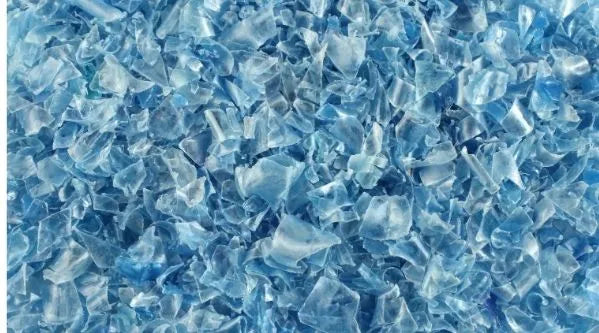
知っておくべきことすべて: PET ヤーンとは何ですか?
|
|
読む時間 0 min
|
|
読む時間 0 min
PET 糸、またはポリエチレンテレフタレート糸は、主に使用済みの水のボトルなどのリサイクルプラスチックから作られた合成繊維です。環境への懸念が高まるにつれて、PET 糸は従来の繊維に代わる持続可能な素材として人気が高まっています。生産プロセスでは、プラスチック廃棄物を収集し、洗浄した後、溶解および押し出し法によって高品質の糸に変換します。
この革新的なアプローチは、プラスチック廃棄物を削減するだけでなく、バージン材料の必要性を最小限に抑えることで天然資源を節約します。PET 糸は、高強度、耐久性、耐湿性、鮮やかな色の保持など、いくつかの優れた特性を誇ります。これらの特性により、衣類や家庭用繊維からアウトドア用品やカーペットまで、幅広い用途に適しています。
さらに、PET 糸はメンテナンスが簡単で、寿命が過ぎた後もリサイクルできるため、環境に優しいという魅力がさらに高まります。消費者が購入の決定において持続可能性を優先する傾向が強まる中、PET 糸はより責任ある繊維産業に向けた大きな一歩となります。この記事では、PET 糸の特性、製造方法、利点、用途についてさらに詳しく掘り下げ、繊維市場における持続可能な慣行の促進における PET 糸の役割に焦点を当てます。
ポリエチレンテレフタレート (PET) は、ポリエステル ファミリーに属する熱可塑性ポリマーです。1940 年代に初めて開発され、それ以来、世界中で最も広く使用されているプラスチックの 1 つになりました。PET は、強度、耐久性、耐湿性、耐薬品性で知られています。衣類、包装材、家庭用品など、さまざまな製品に使用されています。
1. 持続可能性: PET 糸の最も重要な利点の 1 つは、その持続可能性です。リサイクルされたプラスチックを使用することで、PET 糸は埋め立て地や海洋のプラスチック廃棄物の削減に役立ちます。このリサイクル プロセスにより、天然資源が保護され、バージン マテリアルの必要性が減るため、環境に優しい選択肢となります。
2. 耐久性: PET 糸は、その優れた耐久性で知られています。摩耗や裂傷に強いため、家庭や商業施設の人の出入りが多い場所に適しています。PET 糸の強度により、PET 糸で作られた製品は、品質を失わずに毎日の使用に耐えることができます。
3. 耐湿性: PET 糸は優れた吸湿発散性を備えているため、アクティブウェアやアウトドア用テキスタイルに最適です。水を吸収しにくいため、湿気にさらされてもすぐに乾きます。
4. 色の保持: PET 糸に使用されている染色プロセスにより、時間が経っても色あせしにくい鮮やかな色が得られます。この品質により、PET 糸で作られた製品は、複数回洗濯した後でも外観が維持されます。
5. お手入れが簡単: PET 糸で作られた繊維は、一般的にお手入れが簡単です。特別な処理をしなくても洗濯機で洗って乾かすことができるため、毎日の使用に便利です。
6. 軽量: PET 糸は多くの天然繊維に比べて軽量なので、かさばることなく快適さが求められる衣類に最適です。
1. 衣料品: PET 糸は、アクティブウェア、スポーツウェア、カジュアルウェアなど、さまざまな衣類の製造にファッション業界で広く使用されています。吸湿発散性に優れているため、特にスポーツウェアで人気があります。
2. ホームテキスタイル: ラグから室内装飾用の布地まで、PET 糸は耐久性とメンテナンスのしやすさから、ホームテキスタイルでますます使用されています。汚れに強いため、リビングルームやダイニングルームなど、人の出入りが多い場所に適しています。
3. アウトドア用品: アウトドア業界では、テント、バックパック、アウトドア用衣類などの製品に PET 糸を使用することでメリットを得ています。湿気や紫外線に強いため、厳しい環境でも長持ちします。
4. カーペット: 現在、多くのカーペットは耐久性と汚れ防止性に優れた PET 糸で作られています。PET 糸は、性能基準を維持しながら、従来のカーペット繊維に代わる持続可能な代替品となります。
5. アクセサリー: PET 糸は、質感や色の選択肢が豊富なため、バッグ、帽子、スカーフ、その他の手作りアイテムなどのアクセサリーの作成にも使用されます。
PET 対従来のポリエステル
環境への影響
多くの利点があるにもかかわらず、PET 糸の使用には課題もあります。
消費者の選択において持続可能性がますます重要になるにつれ、PET 糸のような環境に優しい素材の需要が大幅に増加すると予想されます。


